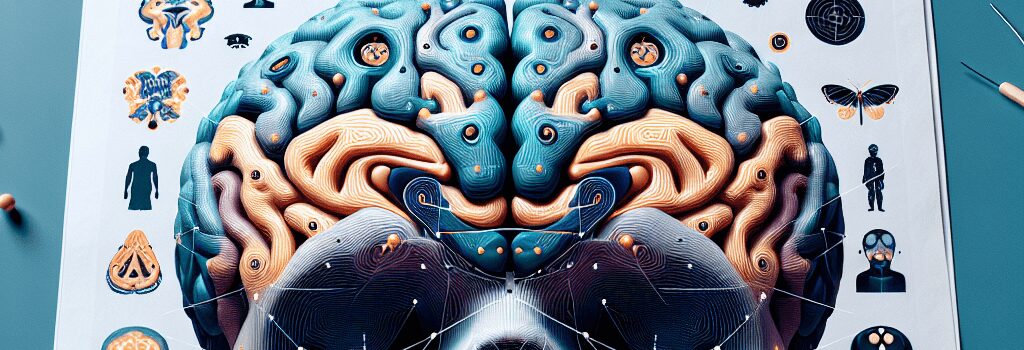How dmPFC Orchestrates Fear Associations in Emotional Models

Jacek Krywko
May 21, 2025 • RIKEN Center for Brain Science, Tokyo
Introduction
When a painful event occurs—such as a wasp sting—the brain doesn’t merely record a simple link between the wasp and pain. It weaves a richer tapestry of associated cues: the location of the sting, the scent of nearby foliage, or even distant visual landmarks. Until now, the precise circuitry underlying these complex emotional models remained elusive. A new study published in Nature (DOI: 10.1038/s41586-025-09001-2) by Joshua Johansen, Xiaowei Gu, and colleagues at RIKEN sheds light on how the dorsomedial prefrontal cortex (dmPFC) builds these associative bundles, extending well beyond the amygdala’s established role in simple fear conditioning.
Behavioral Paradigm and Calcium Imaging
Conditioning Protocol
- Paired group: Rats experienced 20 trials where a visual cue (30 lux LED flash) and an auditory cue (5 kHz pure tone, 75 dB) overlapped for 5 seconds; a mild footshock (0.6 mA, 0.5 s) followed immediately.
- Unpaired group: The same stimuli delivered randomly, separated by >90 s to prevent association.
- 24 hours later, both groups underwent a single-image shock pairing, followed by a tone-only test to measure freezing behavior.
“The paired group froze to the tone alone, confirming a human-like inference: they linked indirect cues to the aversive event,” says Johansen.
Miniscope Calcium Imaging Specifications
- Viral vector: AAV9-Syn-GCaMP7f (titer 1×1013 vg/mL), targeted to dmPFC layers II/III via stereotaxic injection (AP +2.3 mm, ML ±0.6 mm, DV -1.5 mm).
- Miniaturized epifluorescence microscope (nVista HD, Inscopix) mounted with a 0.5 g baseplate; field of view: 600×800 µm; frame rate: 10 Hz; spatial resolution: 2.5 µm/pixel.
- Data preprocessing: motion correction with NoRMCorre, region-of-interest extraction via CNMF-E, and event deconvolution to infer spiking activity.
Key Findings: Associative Bundles in the dmPFC
Analysis of calcium transients revealed that:
- Early sensory phase: dmPFC neurons showed minimal modulation during isolated image or tone presentation.
- Aversive phase: A subset of neurons (≈15%) exhibited high-frequency transients upon footshock delivery.
- Paired group: Overlap emerged between shock-responsive cells and neurons encoding both the visual and auditory cues (p<0.01, permutation test).
“We observed an anatomical bundle—an ensemble of neurons jointly representing multisensory information bound to an aversive event,” explains Gu.
Functional Dissection: dmPFC–Amygdala Pathway
To test causality, the team expressed inhibitory DREADDs (hM4Di) selectively in dmPFC neurons projecting to the basolateral amygdala (BLA). Systemic administration of clozapine-N-oxide (CNO, 5 mg/kg) prior to recall selectively silenced this pathway.
- Result: Rats still froze to the image (simple cue) but not to the tone (inferred cue), confirming that dmPFC input is essential for expressing complex, inferred fear.
- Control animals (saline injection) displayed freezing to both cues, as expected.
“The amygdala can execute simple associations, but requires dmPFC-driven convergence for complex inference,” Johansen remarks.
Mechanisms of Multisensory Integration
How do separate sensory representations merge? Preliminary data suggests recruitment of multisensory hub neurons in dmPFC layers V/VI that express both NMDA receptor subunits (GluN2A and GluN2B) and calcium-permeable AMPA receptors. These cells may act as coincidence detectors, amplifying temporally correlated inputs via dendritic spikes. Additional in vitro patch-clamp recordings are underway to measure synaptic plasticity (LTP/LTD) within these ensembles.
Implications for Neuropsychiatric Therapies
Complex fear models are central to conditions such as PTSD, phobias, and generalized anxiety disorder. By pinpointing the dmPFC–BLA axis, this work opens avenues for targeted interventions:
- Transcranial magnetic stimulation (TMS): focal dmPFC modulation at theta-burst frequencies could disrupt maladaptive associative bundles.
- Deep brain stimulation (DBS): closed-loop stimulation of ventromedial PFC–amygdala tracts guided by neural biomarkers.
- Optogenetics and chemogenetics: in translational rodent models, refine protocols for reversing complex fear without affecting basic associative memory.
Advances in Imaging and Analytical Tools
Recent innovations complement this study’s findings:
- Two-photon volumetric imaging (Harvard-MIT collaboration, Neuron, June 2025) for subcellular resolution across cortical layers.
- Clearing techniques (CLARITY+) enable post hoc 3D reconstruction of entire dmPFC–amygdala pathways at single-synapse resolution.
- Behavioral tracking with DeepLabCut and MoSeq for unbiased quantification of freezing microstructure.
Future Directions
Key questions remain:
- How does the dmPFC encode multiple, distinct aversive outcomes at the same location? Are representations stacked or multiplexed?
- What molecular signals gate the recruitment of multisensory hub neurons? Is dopamine signaling from the ventral tegmental area involved?
- Can noninvasive biomarkers (EEG/MEG signatures) reliably index complex fear models in humans?
As Johansen puts it, “Unraveling these mechanisms will inform precision interventions for trauma-related disorders. We’re only scratching the surface of the brain’s emotional architecture.”